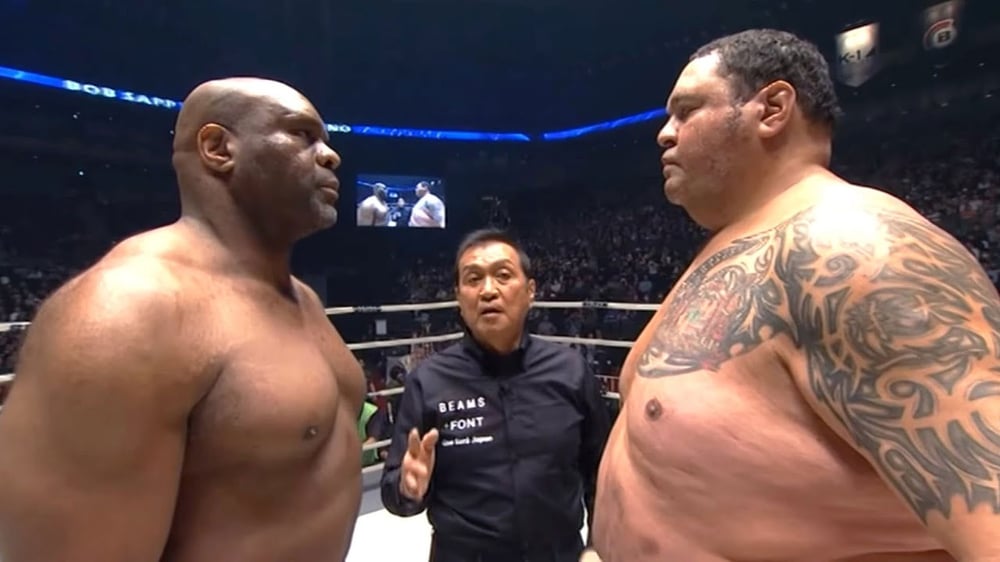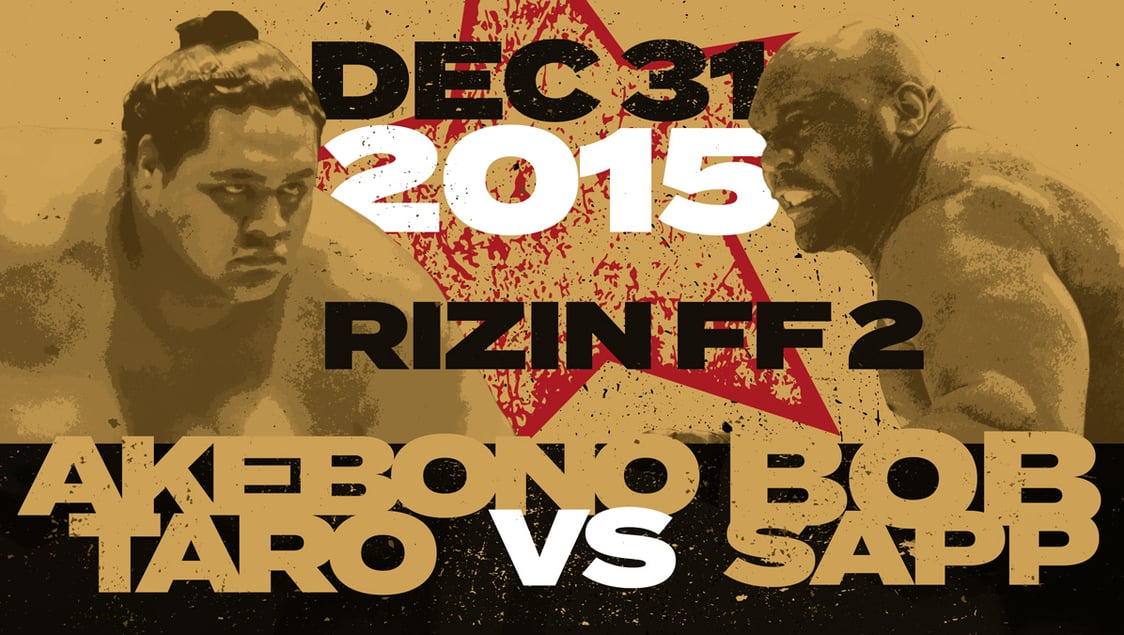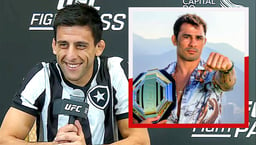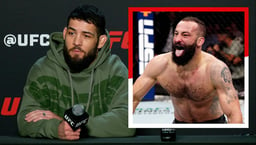
Issue 204
April 2024
December 31, 2015
Saitama, Japan
Rizin Fighting Federation
By Brad Wharton
Step into the colossal shadow of the most epic showdown in Japanese combat sports history as the stage was set in Saitama, Japan, for a battle that not only defied the norms but shattered viewership records, marking an indelible impact on the sports and cultural landscape of the nation.
BEAST WARS
From the late 90s to the late 00s, Japan challenged the West as the premier destination for elite-level Mixed Martial Arts. While the UFC was battling bureaucracy for its very survival, PRIDE and kickboxing promotion K-1 packed arenas and stadiums as fighters flocked to the Far East in search of big fights and bigger paydays.
Broadcast at prime time on massive television networks, Japanese promotions leaned heavily into the entertainment aspect of the fight game. For every Fedor Emelianenko vs Antonio Rodrigo Nogueira, there was a cross-over bout featuring stars from the worlds of pro-wrestling, sports, or pop culture.
The fights were almost universally awful, but that wasn’t the point. The ‘freakshows’ (as they became known in the West) expanded the combat sports audience to entirely new demographics, so it should come as no surprise that the most-watched fight in Japanese history was perhaps the zenith of the practice.
AKEBONO: SUMO’S TRAILBLAZER
Born Chad Rowan on May 8th, 1969, a one-time college basketball hopeful from Waim?nalo, Hawaii, would eventually find unprecedented fame under his shinkona (ring name) of Akebono, meaning ‘New Dawn.’
His rise through Sumo’s ranks was meteoric, reaching the sport’s second-highest division within just two years and being promoted to Makuuchi - the highest division – just two tournaments later.
The ‘New Dawn’ moniker became eerily prophetic in early 1993 when he became the first non-Japanese wrestler to achieve the sport’s highest rank of Yokozuna, or ‘Grand Champion.’
It’s an achievement that can’t be understated, especially in Japan’s furiously nationalistic Sumo Association, where it was a long-held belief that a gaijin (foreigner) would never have the grace and comportment required for a Yokozuna promotion.
Akebono’s trailblazing eight-year run as Yokozuna was a roaring success. He won 11 top division tournaments and was runner-up on 13 occasions, a feat made all the more impressive considering his prime years were shared with another pair of all-time greats: brothers Takanohana and Wakanohana.
Like many combat sports athletes, retirement was not kind to Akebono. Some bad business investments had left him in a precarious financial situation, and unlike other combat sports, retirements in Sumo are strictly permanent.
And so, in 2003, Akebono effectively excommunicated himself from the Sumo Association for the supposedly greener pastures of K-1. Little did he know at the time that the only thing greener was the color of their money.
BOB SAPP: A BEAST IN THE EAST
There’s a good chance that Bob Sapp is the first name that springs to mind when you think of the wacky world of freakshow fights.
A star college footballer, he was drafted into the NFL but failed to make the grade, his career rapidly fizzling out following a steroid scandal.
An attempt at pro wrestling ended similarly tepidly; while a trainee at WCW’s famed Power Plant (which had made a star out of fellow ex-footballer Bill Goldberg), the WWF purchased the company, and Sapp was left behind.
The weird and wonderful world of Japanese combat sports became a professional – and financial - lifeline.
To his credit, Sapp was – quite literally – larger than life. Standing close to six foot five feet tall and weighing over 300lbs (with barely an ounce of fat), the ultra-charismatic American became an overnight success in the notoriously fad-driven Japanese entertainment industry.
With a hit single, numerous TV ads and appearances, plus more merch than you could shake a stick at, Sapp’s willingness to play into a caricature of himself (and some negative racial stereotypes along the way) made him a massive attraction in the Land of the Rising Sun.

AKEBONO VS BOB SAPP: SUPER TITAN BATTLE
As the curtains rose on K-1 PREMIUM Dynamite 2003, all the ingredients were in place for a titanic clash, literally and figuratively.
Sapp, the loud, gregarious American, whose style was billed as simply ‘NFL.’ The stoic Akebono (now a Japanese citizen) flew the flag for the nation’s oldest and most revered martial art.
The bout represented a dichotomy of sports, styles, and cultures. There was just one small problem…only one of them could actually fight.
As the battling behemoths engaged, to the surprise of everyone, it was the Sumo scoring first blood, snapping off a crisp jab, jab-right hook combination.
The 45,000-strong Nagoya Dome crowd roared in approval as ‘Bono executed a trademark thrust, briefly pushing his man back before crushing him into the corner with his massive frame.
Sapp seemed at a loss; for the first time in his (albeit brief) career, he was up against an opponent he couldn’t overwhelm by sheer force of will.
As the ref separated the hulking goliaths, the camera cut to a shot of Akebono’s wife, Christine, pale with terror and tightly gripping the hands of their two eldest children.
Back in the ring, the Hawaiian was advancing once again. There was something resembling a jab there, but instead of a power punch behind it, he simply trundled forward, seemingly encouraged by the roar of a crowd content to see him use Sumo against Sapp regardless of how much good it was doing.
Herein lay Sapp’s edge: While he was no Peter Aerts in the ring, he’d spent his entire life being coached on the Gridiron, at the Power Plant, and now under Sam Greco.
He didn’t need to be Aerts, just to be patient enough to execute the handful of basic techniques drilled into him.
As Akebono shoved and clubbed away, Sapp got stuck in with leg kicks and short, straight punches.
The big(ger) man’s knees had been shot for years, and he was used to competing in matches that lasted mere seconds; by the time the bout had reached the halfway point of the first round, his pace had become glacial.
Sapp unloaded with a barrage of strikes. It was nothing devastating, but they didn't have to be with all 420lbs of Akebono lumbering onto them.
With just under a minute left in the round, the former Yokozuna was clattered to the canvas largely of his own doing.
Somehow, he answered the count, taking in gulps of air so deep that the first few rows had to hold on to their valuables. The camera cut again to his wife; her look of terror was replaced with genuine concern for her husband’s safety.
Sapp smelled blood and engaged his trademark ‘beast’ attack, swarming forward with every ounce of his chemically augmented might. ‘Bono once again crashed to the floor, albeit due to a loss of balance, but it took him an age to return to his feet.
He was about to wish he hadn’t.
The American immediately closed the distance and, with Akebono again leaning into him, arms outstretched, delivered a piston-like right hand to the temple.
It was a horrid finish; the Hawaiian went limp, dropping almost vertically like a demolished skyscraper before lurching forward, face first into the canvas.
The crowd exploded at the spectacle.
THE AFTERMATH
Akebono was reportedly paid $2-4m for his first two K-1 bouts, eventually competing 13 times for the organization over various rulesets.
He won, just once, a kickboxing match against then-44-year-old in-house referee/employee Nobuaki Kakuda. Read into that what you will.
In a full circle moment, Akebono’s last fight would be a rematch with Sapp, nine years removed from his previous bout. The American won in the second round when the contest was stopped on a cut.
Despite the inglorious end to both their careers (Akebono’s virtually winless outside Sumo and Sapp’s infamous ‘World Tour of Shame’ that saw him criss-cross the planet taking losses for anyone willing to pay his fee), the importance of their December 31st, 2003 meeting is unquestionable.
The bout attracted close to 55 million viewers in a country with a population of less than 130 million. It marked the first time in history that the traditional New Year’s Eve talent show on national broadcaster NHK was outdrawn.
It may not have been the best fight in Japanese combat sports history, but it was undoubtedly one of the most impactful as a cultural milestone.
Chad ‘Akebono Taro’ Rowan passed away on an undisclosed date in April 2024. He was 54.










